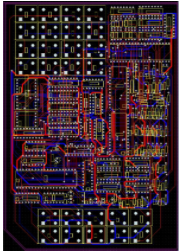First, the purpose:
Better control of SMT workshop materials, reduce material loss during use, thereby reducing workshop costs.
Two, SMT material precious grade classification description:
Class A materials: PCB, BGA, flash and other valuable materials. (The loss ratio is 0, and bad materials are exchanged at 1:1)
Class B materials: ICs other than Class A, various sockets, switches, shielding covers, crystal oscillators, diodes, triodes, etc.
Class C materials: CHIP materials such as resistance, capacitance, and inductance.
3. SMT workshop material management system content
1. The material clerk counts the materials in the material preparation area designated by the warehouse clerk according to the "Bill of Materials", and checks the material number, specification, and quantity of the material list item by item. IC and PCB must be 100% counted. Check it with the "Bill of Materials", sign the list, and bring the "Bill of Materials" back to the SMT workshop with the materials.

2. Place the received materials in the black electrostatic box marked "Material Box", and place the number of units marked in the "Materials to be Produced Area".
3. Rolls without reels should be wound on the same type of reels. Only one type of material is allowed to be wound on a reel, and clearly marked.
4. When receiving arrangements for production, the operator should make a 100% inventory of Class A materials and bulk materials during the operation. Any doubts or deficiencies should be reported immediately and followed up.
5. The operator loads the production according to the "Station Position List", and the production line is not allowed to place materials at will. All online materials are hung on the material rack according to the station to facilitate material change. At the same time, there cannot be two types of materials on the same machine.
6. Check the machine throwing condition once every hour during production, and find that there is throwing phenomenon of A-type materials, and if the CHIP throwing rate exceeds 0.3%, immediately notify the engineer to improve, and the engineer must track the machine throwing condition every day.
7. Collect, sort and repackage the loose parts in time and submit them to IPQC for confirmation and use to avoid leftovers or backlogs. Operators are strictly forbidden to mix or abuse materials of the same specification but different from manufacturers and customers.
8. The SMT production line is equipped with a special bin for empty trays, and the operator should place the empty trays neatly in the special bin after refueling. The technician will check carefully before leaving get off work every day to ensure that no materials are abandoned.
9. When the production is completed or under the condition of material shortage, the operator will unload the materials of each station in the designated material box in time when receiving the order of dismantling. The leader arranges staff to take inventory and hand it over to the material staff along with the quantity. The material staff performs statistics, and if there is an abnormality (the loss is out of range), it will immediately feed back to the leader on duty and follow up the material.
10. If the normal loss statistics are not enough to support production, you should immediately apply for over-collection and indicate the reason on the material over-collection form.
11. PCB, IC and other Class A material staff are sent to the operator according to the estimated output of each shift. If there are two remaining shifts, the number of PCBs and ICs must be handed over. If the handover is not clear, the operators of the two shifts will be punished accordingly. .
12. If the IC and circuit board have poor manufacturing process, they should promptly report back and follow up the reason. If the person is scrapped, the person who is responsible should be traced.
13. It is strictly forbidden to misappropriate materials between various models and customers.
14. Take care of the materials used in each work station. If the material is violated and the material is bad, the person who is responsible for the loss shall bear the responsibility.